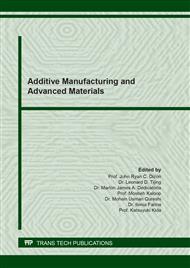p.79
p.87
p.99
p.107
p.119
p.125
p.131
p.137
p.143
Influence of PET Fibers on Compressive Strength Water Absorption Percentage and Density of Adobe
Abstract:
Adobe is a building material that has been used since ancient times, but is not as widely used as clay bricks or concrete for housing construction. In addition, it uses a construction technique that has been passed down and improved from generation to generation. In view of this, the present work aims to improve the properties of adobe by using PET bottle fibers in its composition. A mechanical test and two physical tests were carried out for adobe with 0% (standard adobe), 2%, 4% and 6% PET fibers, where it was observed that the adobe with 6% PET fibers obtained the best results, since it increased the compressive strength of the adobe by 19%, reduced the absorption percentage by 12% and finally reduced the density by 16.4%. Therefore, the addition of PET fibers in adobe is recommended, as it contributes to improve its mechanical and physical properties. Additionally, it reduces pollution in streets, rivers, parks, etc. because it promotes the recycling of PET bottles.
Info:
Periodical:
Pages:
119-124
Citation:
Online since:
March 2022
Authors:
Keywords:
Price:
Сopyright:
© 2022 Trans Tech Publications Ltd. All Rights Reserved
Share:
Citation:


